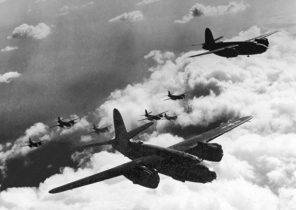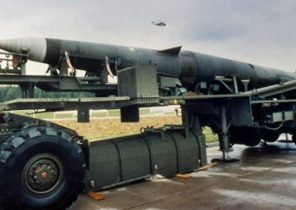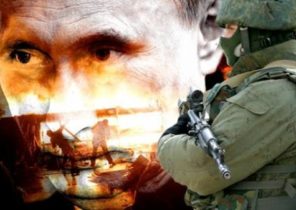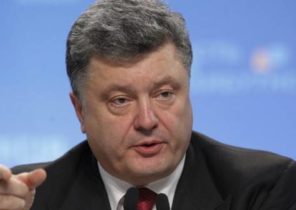
Earlier this week Lockheed Martin Skunk Works, School of test pilots of the U.S. air force Research laboratory US air force and Calspan Corporation made a demonstration flight of an experimental unmanned F-16. The participants of the event called the test an important milestone in the development of military aircraft of the United States. Work in the field of unmanned military aircraft in the United States conducted against a backdrop of constant news about the shortage of pilots. Recently, Lieutenant-General Gina Grosso, the air force summed up the statistics, saying that in the US air force has a shortage 1555 pilots, including 1211 fighter pilots.
The April theses, unmanned
This is the second flight of this kind in the past two weeks. During the first test of an unmanned F-16 flew in formation as a slave along with manned aircraft, executed the strike, “air-ground” and returned to service. Mostly tested the flight abilities of the machines and communication systems.
During the flight this week at the airbase “Edwards” (CA) unmanned F-16 have already given more “freedom” in decision-making on the attack of the “air-land” on the basis of the available weapons on Board and to meet changing flight conditions. The plane was supposed to respond to external threats and to do calculations on maneuvering in real-time. The purpose of the flight was to demonstrate the ability of unmanned aircraft to adapt to dynamically changing conditions in the air. Also, the air force tried to assess how well integrated computer programs from different developers.
All this happens within the framework of American program Loyal Wingman, which was launched in 2015 and which aims to provide pilots in the sky is a reliable assistant in the form of drones. And not just in the form of the usual shock or reconnaissance drones, and as a full-fledged unmanned combat aircraft. The essence of the program — the pilot and his aircraft computers run all of its subordinate air brethren the air, not through the operators on the ground. This saves time and the volume of the transmitted information and allows you to respond quickly to the situation while in flight, and also to send on any dangerous missions unmanned vehicle in the first place, without risking the life of pilots.
The US air force already uses in 2013 unmanned and decommissioned F-16 (option QF-16) with software stuffing from Boeing, but they serve only as a training target in the air. By the way, in March of this year, Boeing received a contract from the U.S. air force to supply 18 such drones until 2027. Past in April, tests of Lockheed Martin and Calspan Corporation will allow the use of drones as active participants in a real fight.
Work on Autonomous F-16 logically lead to future use of the F-35 as a command center for a number of unmanned vehicles. On this today work, for example, in DARPA. One of the F-35 will, in theory, to accompany in the air swarms of scout drones and the same combat drone F-16. To test these “ligaments” in the air plan to begin in 2019.
Similar programs exist for the army helicopters. The crews of the helicopters, Apache and Kiowa, also in the foreseeable future will be able from the cab of their machines fully control “wards” drones in the air during their missions. Furthest in this direction has moved to Apache, where at least 2016, provides an interface for video output and partial control drones. Running this “ligament helicopter-drones” takes place in Afghanistan.
Beyond that sounded and thought, when in the future the installation of a simple “black box” software on any aircraft, will transform it into a drone for military purposes.
Unmanned aviation forecasts
Until recently it was believed that even in the distant future self-driving cars will never replace the pilots on the tasks for the use of nuclear weapons, which is a very important decision and in the aerial melee, where everything happens too fast. But already in 2009 in the US air force spoke of creating a UAV MQ-Mc, which will be capable of that, and another somewhere in the area of 2040 years.
Moreover, increasingly voiced and ideas about the possibility of a complete transition of the air force unmanned aerial vehicles.
In 2009, after the release of the forecast on the development of unmanned systems in the form of a policy document called Unmanned Aircraft Systems Flight Plan 2009-2047 the experts considered that the F-35 will be last manned aircraft in the U.S. air force and in the development of new manned aircraft, the Americans just do not will to invest any more money.
Admiral of the U.S. Navy ray Mabus (Ray Mabus), speaking at a conference on Sea-Air-Space in 2015, openly announced that the F-35 Lightning II, produced in the framework of the Joint Strike Fighter, “should and almost certainly will be the last manned fighter-attack aircraft, which will purchase or use the Navy”.
Delivery of the F-35 in the air force is scheduled until 2037, and fail they have to the 2070-th year, that is by this time quite realistic to predict a gradual transition to fully unmanned and to a different extent Autonomous, force.
Transport and air refueling tankers
Not only drums and reconnaissance drones and combat aircraft can be unmanned and Autonomous. For the operation of the percussion devices are needed and a line of support vehicles, who will assume the role of serving air warehouses.
Today in the United States is discussed, for example, not only create new cargo unmanned vehicles, but the modification of the transport aircraft C-17 and C-130 that would become unmanned aerial bases, warehouses for automatic re other drones in the air. On these aircraft during flight may be provided, and 3D printing as drones parts, and build a simple disposable drones for the same melee.
In the same course will be developed and fuel and Autonomous refueling tankers that allow the drones do not land for a long time, to refuel or recharge in the air and fulfill one mission after another without long stops.
While all this seems pure futurology, but the vector of development of the air force are obvious. The end of the century we can expect that the air forces of many countries will be 100% unmanned.







